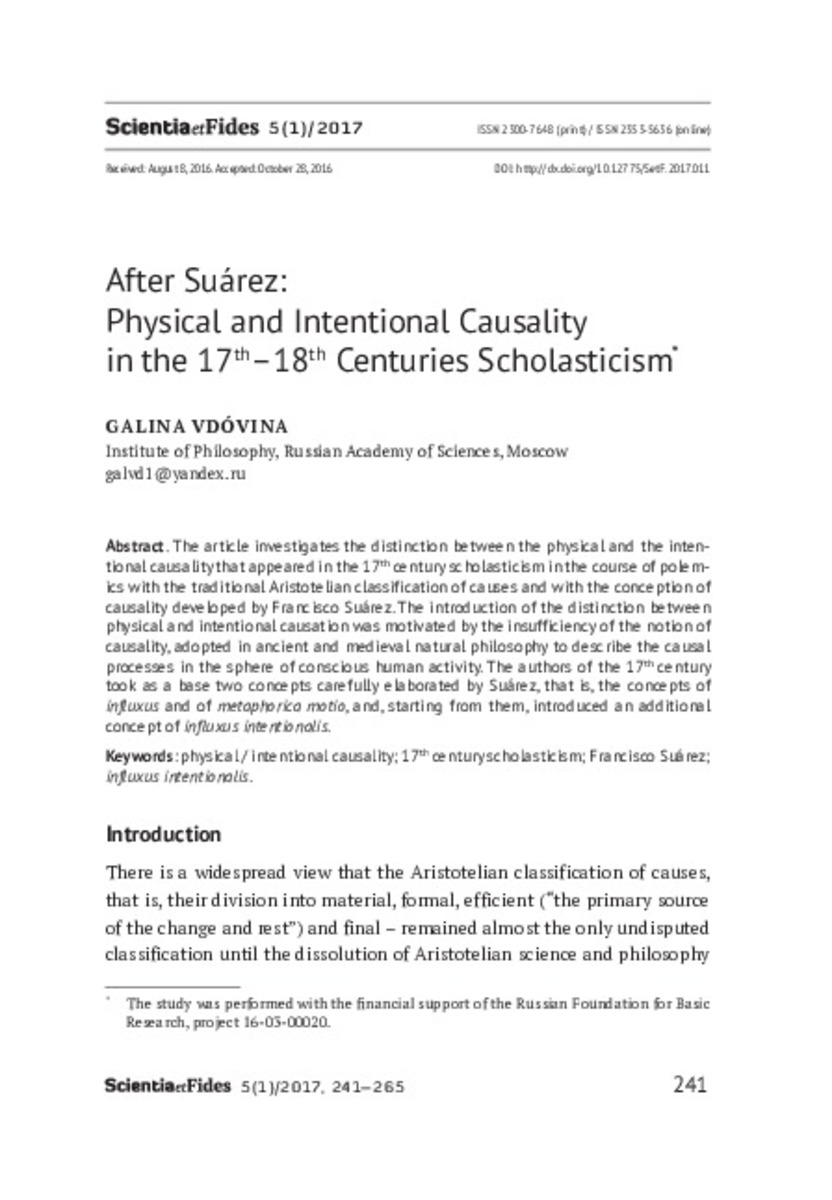After Suárez: Physical and Intentional Causality in the 17th–18th Centuries Scholasticism
Palabras clave :
physical/intentional casuality
17th centrury scholasticism
Francisco Suárez
influxus intentionalis
Fecha de publicación :
2017
Editorial :
Servicio de Publicaciones de la Universidad de Navarra
Cita:
Galina, V. (2017). After Suárez: Physical and Intentional Causality in the 17th–18th Centuries Scholasticism. Scientia et Fides, Vol. 5, Nº 1, pp. 241-265
Aparece en las colecciones:
Estadísticas e impacto
0 citas en

0 citas en

Los ítems de Dadun están protegidos por copyright, con todos los derechos reservados, a menos que se indique lo contrario.







